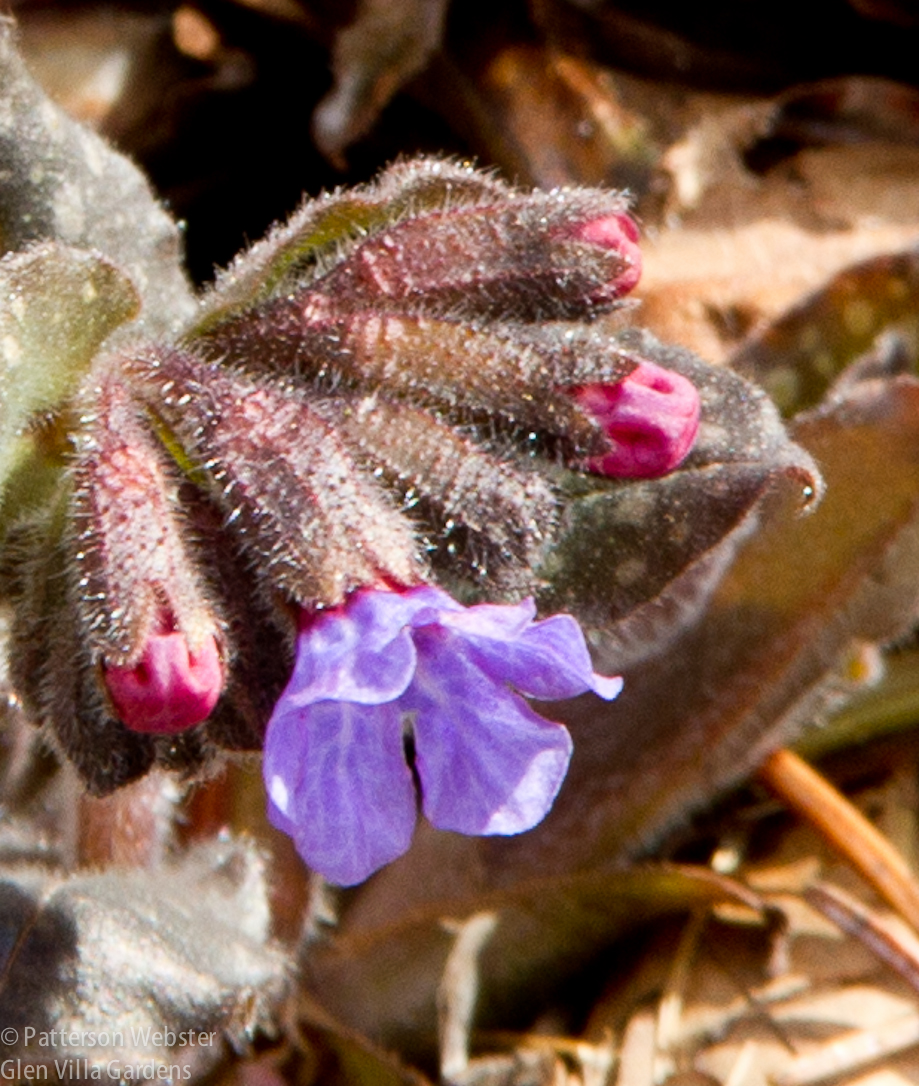Crocus and daffodils are sure signs of spring, and I await their appearance at Glen Villa, my garden in the Eastern Townships of Quebec, with bated breath. (Will snow come again or is it finally safe to remove my winter tires?)
A less common sign of spring here is the flower that was blooming yesterday near the front door. It’s a common plant, found in many shady or woodland gardens, with almost 100 named cultivars, but I haven’t used it widely. It’s pulmonaria or common lungwort.
I don’t know the name of the lungwort that is growing in my garden but it has the distinctive hairy stem, the spotted leaves and the flowers that change colour from pink to blue as they age. I found it growing in a garden next door to Glen Villa, and when I began to plant the garden in the late 1990s, I transplanted several clumps. These have spread happily and now form a thick carpet under the large pine tree at the top of our front steps.

This photo from last year shows buds of varying colours. The change from pink to blue tells bees whether the flower is too young to provide pollen and nectar, too old, or just right.
The name ‘lungwort’ is unattractive to my ears but both it and the plant’s scientific name share an interesting history. ‘Pulmonaria’ comes from the Latin word ‘pulmo’ meaning lung; the name is one example of a doctrine that dates from the first century AD, to physicians and philosophers like Galen.
Simply put, this doctrine was based on the idea that a plant which resembled an organ of the human body could cure an ailment that stemmed from that organ. The spotted leaves of Pulmonaria were thought to resemble ulcerated lungs, and were used to treat pulmonary infections.

The hairs on the stem and leaves of lungwort must have tickled the throat and may have made it useful as an expectorant.
In medieval times the idea acquired a theological aspect. God created plants that looked like parts of the body in order to alert people to their medicinal qualities. Botanists like William Coles (1626-1662) wrote that walnuts were good for curing ailments of the brain because “they Have the perfect Signatures of the Head.” Hypericum, or Saint Johns wort, was good for wounds and minor injuries because the “little holes whereof the leaves…are full, do resemble all the pores of the skin…”
The German mystic and theologian Jacob Boehme (1575-1624 spread the idea that there was a link between the appearance and the use of a plant. He gave the doctrine its name in his book The Signature of All Things, published in 1621.
Many of today’s plants still bear names that reflect this medieval belief. Eyebright cured eye infections. Bloodroot cured diseases of the blood, snakeroot was a counter against a snake’s venom. Liverwort or hepatica was used to treat liver ailments. Toothwort or dentaria was used for – yes, you guessed it – problems with teeth.
My favourite of all these signatures is maidenhair fern. It was not meant for women, whether virginal or non. It was intended for men, to cure baldness.

The fronds of this maidenhair fern are arranged like a tiara. Black stems contrast nicely with the green leaf tissue..
Do you think I can market the idea?









Maidenhair! I think we should stop eating those giant carrots and all go to Italy and have a great time!
Robert, I’m off to Italy on Thursday. Pasta and gardens, wine and walking — can’t beat the combo, with or without giant carrots and maidenhair ferns.
Enjoy, your trip!
Beautiful photos, Pat. I had no idea about the fern and baldness…seems silly doesn’t it? I guess vanity is nothing new.
Amazing what you can discover on line. I wonder how they prepared the ferns… boiled, stewed, fried. Maybe they steamed them, the way we cook fiddlehead ferns in early spring. Maybe those are good for suffering musicians.
I know some who could do with some maidenhair….
Don’t we all!